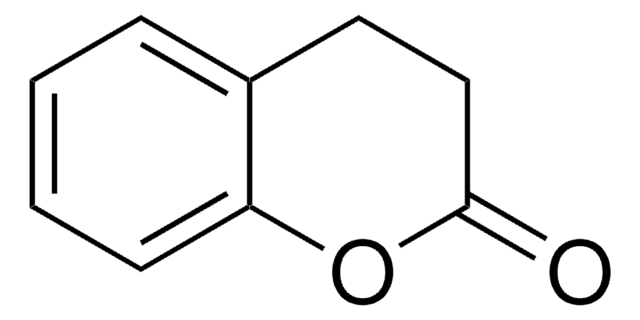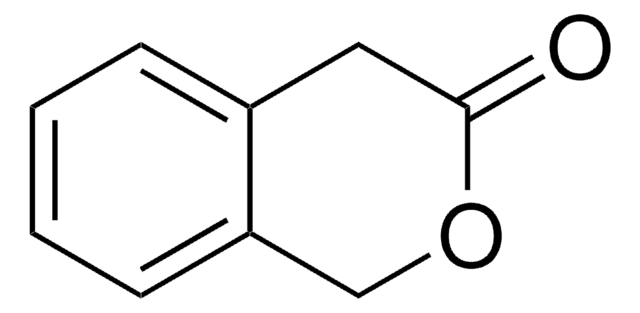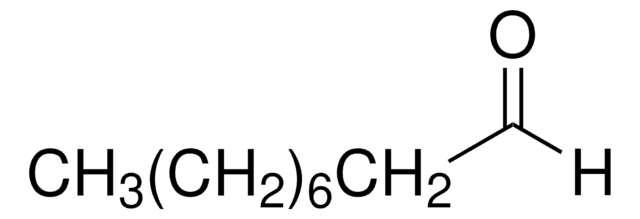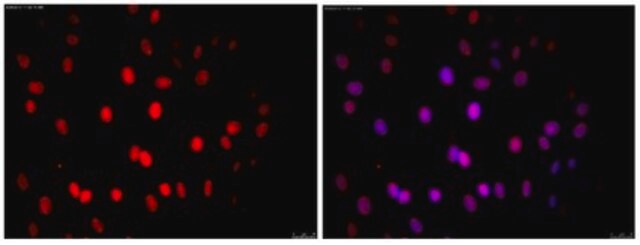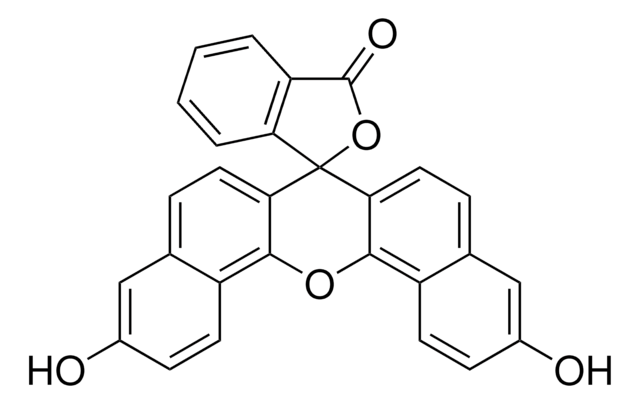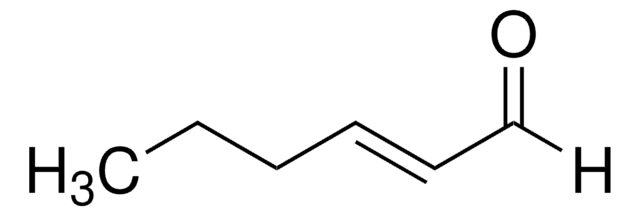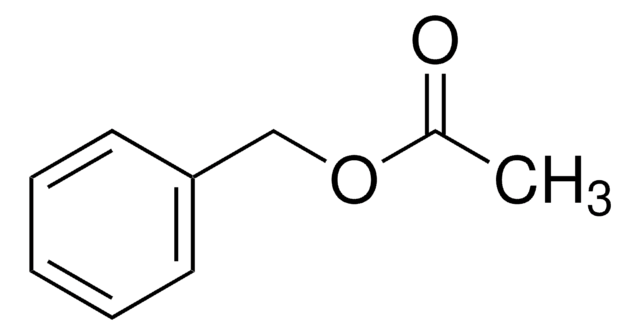W238104
Dihydrocoumarin
≥99%, FCC, FG
Sinónimos:
3,4-Dihydro-1-benzopyran-2-one, Benzodihydropyrone, Hydrocoumarin
About This Item
Productos recomendados
origen biológico
synthetic
Nivel de calidad
grado
FG
Halal
Kosher
Agency
meets purity specifications of JECFA
cumplimiento norm.
EU Regulation 1334/2008 & 178/2002
FCC
FDA 21 CFR 117
Análisis
≥99%
índice de refracción
n20/D 1.556 (lit.)
bp
272 °C (lit.)
mp
24-25 °C (lit.)
densidad
1.169 g/mL at 25 °C (lit.)
aplicaciones
flavors and fragrances
Documentación
see Safety & Documentation for available documents
alérgeno alimentario
no known allergens
Organoléptico
coconut; coumarin; sweet
cadena SMILES
O=C1CCc2ccccc2O1
InChI
1S/C9H8O2/c10-9-6-5-7-3-1-2-4-8(7)11-9/h1-4H,5-6H2
Clave InChI
VMUXSMXIQBNMGZ-UHFFFAOYSA-N
¿Está buscando productos similares? Visita Guía de comparación de productos
Categorías relacionadas
Descripción general
Aplicación
- Novel Dihydrocoumarins Induced by Radiolysis as Potent Tyrosinase Inhibitors.: This research identifies new dihydrocoumarins produced through radiolysis, demonstrating their potential as effective tyrosinase inhibitors, which could have significant applications in dermatology and related fields (Jeong et al., 2024). (Jeong et al., 2024).
Acciones bioquímicas o fisiológicas
Otras notas
Palabra de señalización
Warning
Frases de peligro
Consejos de prudencia
Clasificaciones de peligro
Acute Tox. 4 Oral - Skin Sens. 1
Código de clase de almacenamiento
10 - Combustible liquids
Clase de riesgo para el agua (WGK)
WGK 1
Punto de inflamabilidad (°F)
212.0 °F
Punto de inflamabilidad (°C)
> 100 °C
Equipo de protección personal
Eyeshields, Faceshields, Gloves, type ABEK (EN14387) respirator filter
Certificados de análisis (COA)
Busque Certificados de análisis (COA) introduciendo el número de lote del producto. Los números de lote se encuentran en la etiqueta del producto después de las palabras «Lot» o «Batch»
¿Ya tiene este producto?
Encuentre la documentación para los productos que ha comprado recientemente en la Biblioteca de documentos.
Los clientes también vieron
Nuestro equipo de científicos tiene experiencia en todas las áreas de investigación: Ciencias de la vida, Ciencia de los materiales, Síntesis química, Cromatografía, Analítica y muchas otras.
Póngase en contacto con el Servicio técnico